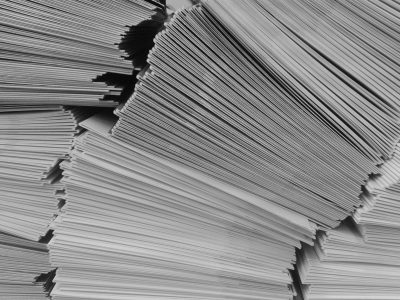Direct deposit is a secure and fast payment system used by the CRA to transfer tax credits and refunds to Canadians. However, the direct deposit system isn’t used by just the CRA.
We’ll talk about what direct depositing is in concept, then we’ll explain how this concept is being used by Service Canada to better help Canadians.
What is Direct Deposit in Canada?
Many years ago, employees were paid either at work or via the mail. Each employee would receive a paper copy of his or her pay stub showing gross pay and net pay. Attached to this pay stub was the paycheck.
Employees would then have to go to their bank, fill out a deposit slip, and potentially stand in a line before ever being able to access their money.
With new technology comes many benefits and the removal of inconveniences. Banks advanced quickly in the age of the internet, and most employees are now paid by something called direct deposit.
Not only are employees overjoyed by this new method but governments are also thrilled that so many people are now using direct deposit. That’s right – governments use direct deposit as well to pay citizens for anything from tax refunds to EI benefits.
Rather than print out paper checks to be mailed to employees or citizens as the case may be, direct depositing allows those sending money to do so electronically.
This means that money shows up in the receiver’s bank account within a few days and does not require either party to do anything other than have a bank account set up to send or receive direct deposit.
Direct depositing depends on the network called the electronic fund transfer (EFT) system. Not to be confused with NFT, EFT is used daily by all Canadians.
This system relies on verification of bank accounts at both the sending and receiving sides and makes sure that the funds are going to the location and person intended.
What Services Use Direct Deposit?
Direct deposit is used by nearly any service that pays out funds to Canadians. This includes:
– Recipients of tax refunds – the Canada Revenue Agency uses direct deposit at tax time now to make sure you get your tax refund as fast as possible. Not only does it reduce turnaround, but it also saves tens of millions of tax dollars it would cost to send everyone paper checks.
– Employment insurance (EI) applicants – once EI benefit applicants complete their applications and receive their benefit statements, Service Canada uses the same information in your My Account to submit benefit funds once approved.
– Canada Pension Plan applicants – Since computers might be a bit difficult to come by in this area, applicants can request direct deposit by phone or by mail
– Government annuity holders – the process for direct deposit for annuity holders is a bit more involved as recipients will need to provide the annuity contract number, name and number of the bank account, phone number of the branch that holds your account, and bank account number. This information will need to be provided either over the phone or via mail.
– Other Government benefits
How Can I Set Up Direct Deposit?
Applying for direct deposit can be accomplished entirely online via your My Account.
In order to sign up, you will need to collect a few pieces of information:
– Your Social Insurance Number (SIN)
– The name of your bank or financial institution. You may also want to confirm with your bank that they are set up to receive direct deposits, that there are no additional fees involved, and that the process is not overly time-consuming.
– The branch or transit number, and
– Your account number.
After you log into your My Account, simply navigate to where your banking information is kept and follow the links. Once you have direct deposit set up, you will also be able to look over your information to ensure that the bank information is still accurate. If it’s not, you can easily change it.
Conclusion
Direct deposit has been an enormous benefit to employees and citizens who no longer have to drive to a bank and go through the song and dance that takes valuable time away from spending it with loved ones.
The government is also able to submit payments much faster. The positive effect is that EI benefits applicants, those who have lost their job, those who are medically unable to work, those who are on maternity, and those who are taking care of loved ones at home, are able to receive their payments with far more regularity and don’t have to break up their day by leaving the house with paper cheques.
Governments are also able to save taxpayer money because sending out paper cheques was at one point a huge expenditure reaching into the tens of millions.












